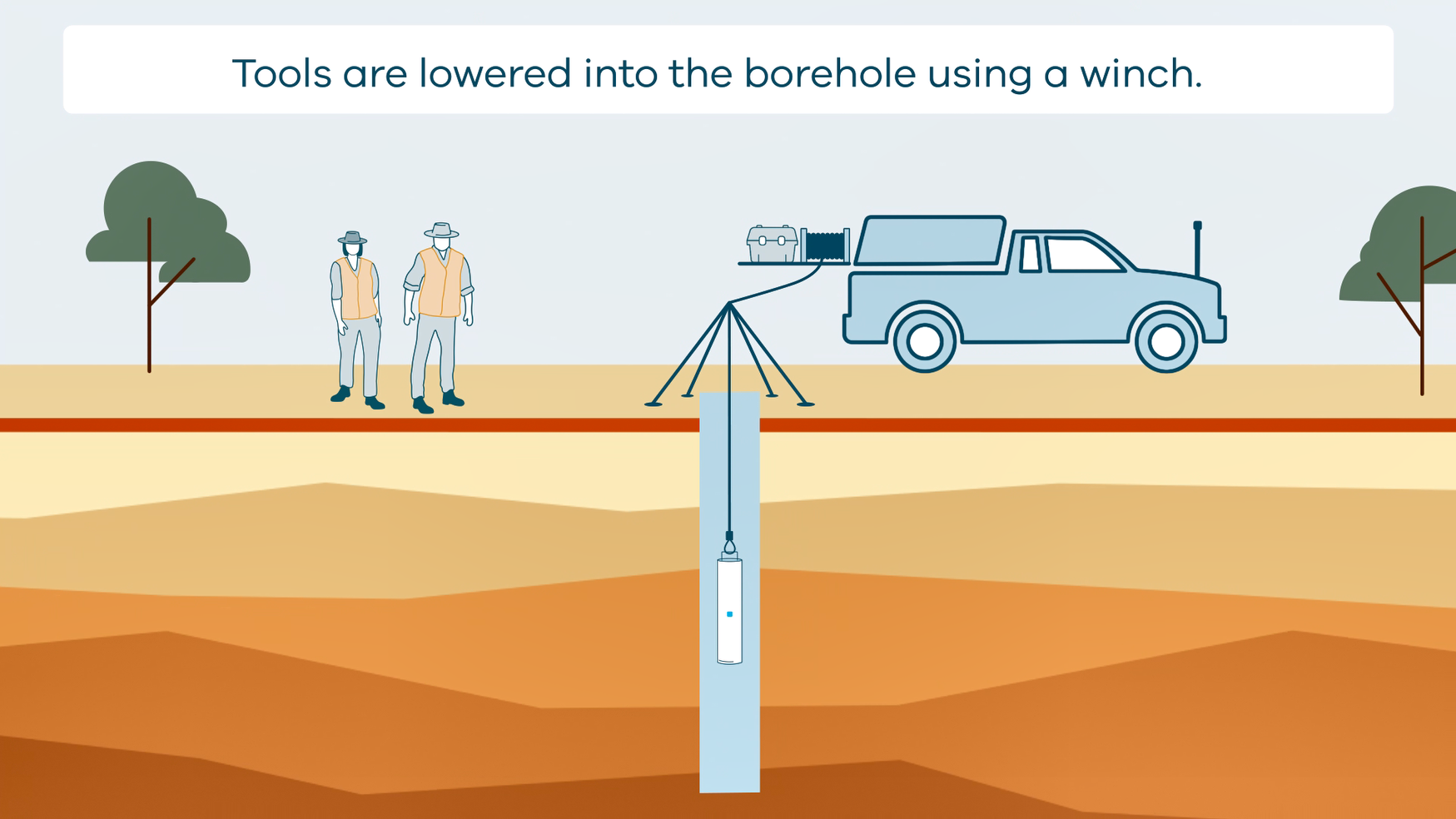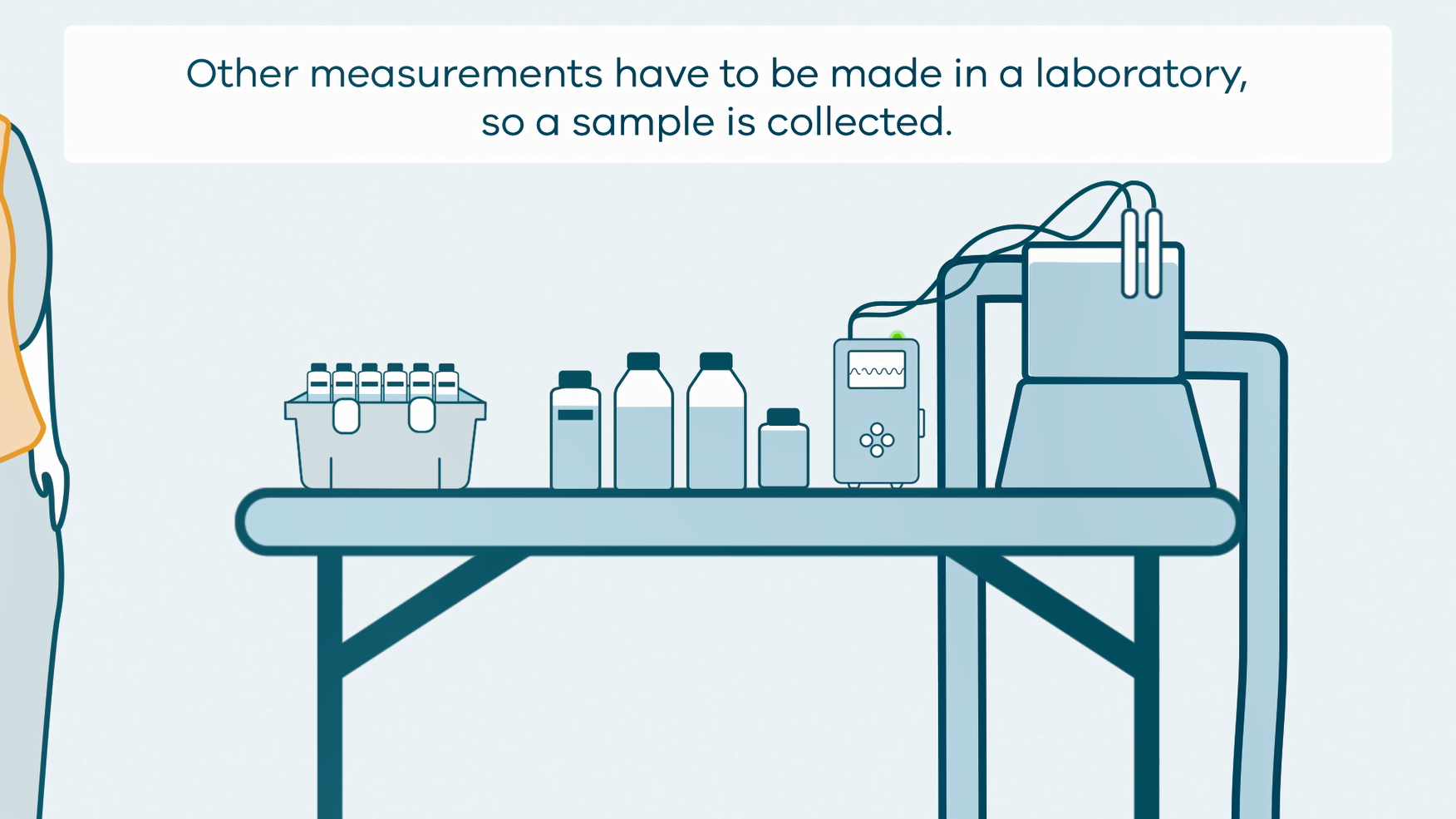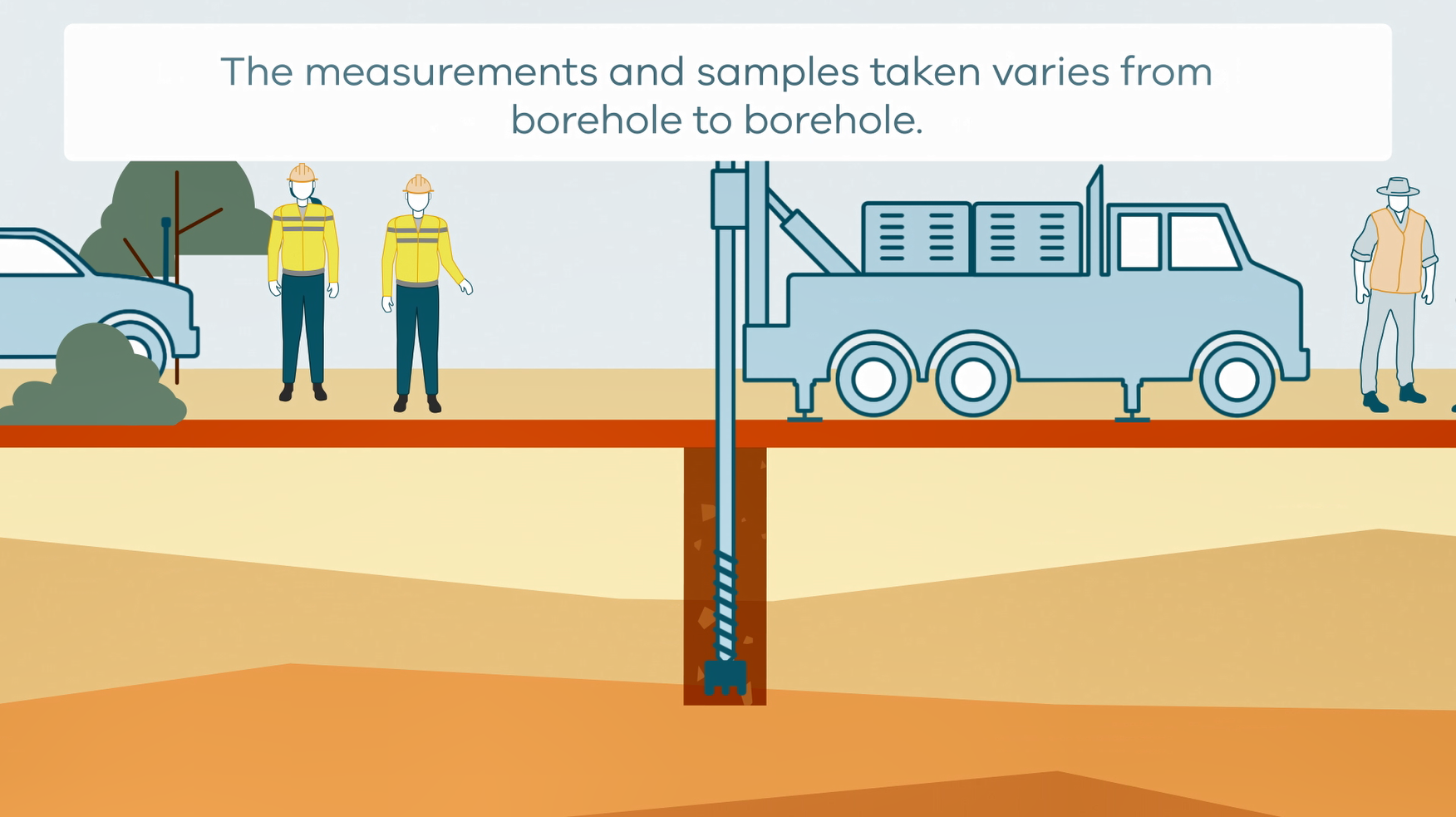Borehole
Type of resources
Keywords
Publication year
Service types
Topics
-
<b> Legacy service retired 29/11/2022</b> This is an Open Geospatial Consortium (OGC) web service providing access to Australian onshore and offshore borehole data conforming to the GeoSciML version 4.0 specification. The borehole data includes Mineral Drillholes, Petroleum Wells and Water Bores along with a variety of others types. The dataset has been restricted to onshore and offshore Australian boreholes, and bores that have the potential to support geological investigations and assessment of a variety of resources.
-
This animation shows how borehole geophysical surveys are conducted. It is part of a series of Field Activity Technique Engagement Animations. The target audience are the communities that are impacted by GA's data acquisition activities. There is no sound or voice over. The 2D animation includes a simplified view of what borehole geophysics equipment looks like, what the equipment measures and how scientists use the data.
-
Geoscience Australia’s Exploring for the Future (EFTF) program provides precompetitive information to inform decision-making by government, community and industry on the sustainable development of Australia's mineral, energy and groundwater resources. By gathering, analysing and interpreting new and existing precompetitive geoscience data and knowledge, we are building a national picture of Australia’s geology and resource potential. This leads to a strong economy, resilient society and sustainable environment for the benefit of all Australians. This includes supporting Australia’s transition to a low emissions economy, strong resources and agriculture sectors, and economic opportunities and social benefits for Australia’s regional and remote communities. The Exploring for the Future program, which commenced in 2016, is an eight year, $225m investment by the Australian Government. Further detail is available at http://www.ga.gov.au/eftf. The National Groundwater Systems (NGS) project, is part of the Australian Government’s Exploring for the Future (EFTF) program, led by Geoscience Australia (https://www.eftf.ga.gov.au/national-groundwater-systems), to improve understanding of Australia’s groundwater resources to better support responsible groundwater management and secure groundwater resources into the future. The project is developing new national data coverages to constrain groundwater systems, develop a new map of Australian groundwater systems and improve data standards and workflows of groundwater assessment to populate a consistent data discovery tool and web-based mapping portal to visualise, analyse and download hydrogeological information. While our hydrogeological conceptual understanding of Australian groundwater systems continues to grow in each State and Territory jurisdiction, in addition to legacy data and knowledge from the 1970s, new information provided by recent studies in various parts of Australia highlights the level of geological complexity and spatial variability in stratigraphic and hydrostratigraphic units across the continent. We recognise the need to standardise individual datasets, such as the location and elevation of boreholes recorded in different datasets from various sources, as well as the depth and nomenclature variations of stratigraphic picks interpreted across jurisdictions to map such geological complexity in a consistent, continent-wide stratigraphic framework that can support effective long-term management of water resources and integrated resource assessments. This stratigraphic units data compilation at a continental scale forms a single point of truth for basic borehole data including 47 data sources with 1 802 798 formation picks filtered to 1 001 851 unique preferred records from 171 367 boreholes. This data compilation provides a framework to interpret various borehole datasets consistently, and can then be used in a 3D domain as an input to improve the 3D aquifer geometry and the lateral variation and connectivity in hydrostratigraphic units across Australia. The reliability of each data source is weighted to use preferentially the most confident interpretation. Stratigraphic units are standardised to the Australian Stratigraphic Units Database (ASUD) nomenclature (https://asud.ga.gov.au/search-stratigraphic-units) and assigned the corresponding ASUD code to update the information more efficiently when needed. This dataset will need to be updated as information grows and is being revised over time. This dataset provides: 1. ABSUC_v1 Australian stratigraphic unit compilation dataset (ABSUC) 2. ABSUC_v1_TOP A subset of preferred top picks from the ABSUC_v1 dataset 3. ABSUC_v1_BASE A subset of preferred base picks from the ABSUC_v1 dataset 4. ABSUC_BOREHOLE_v1 ABSUC Borehole collar dataset 5. ASUD_2023 A subset of the Australia Stratigraphic Units Database (ASUD) This consistent stratigraphic units compilation has been used to refine the Great Artesian Basin geological and hydrogeological surfaces in this region and will support the mapping of other regional groundwater systems and other resources across the continent. It can also be used to map regional geology consistently for integrated resource assessments.
-
This service provides Estimates of Geological and Geophysical Surfaces (EGGS). The data comes from cover thickness models based on magnetic, airborne electromagnetic and borehole measurements of the depth of stratigraphic and chronostratigraphic surfaces and boundaries.
-
This animation shows how groundwater sampling is conducted. It is part of a series of Field Activity Technique Engagement Animations. The target audience are the communities that are impacted by GA's data acquisition activities. There is no sound or voice over. The 2D animation includes a simplified view of what groundwater sampling equipment looks like, what the equipment measures and how scientists use the data.
-
This animation shows how stratigraphic drilling is conducted. It is part of a series of Field Activity Technique Engagement Animations. The target audience are the communities that are impacted by GA's data acquisition activities. There is no sound or voice over. The 2D animation includes a simplified view of what stratigraphic drilling looks like, what measurements and samples are taken, and how scientists use the data.
-
This collection includes information regarding the location and design of Australian onshore and offshore boreholes, where boreholes are defined as the generalized term for any narrow shaft drilled in the ground, either vertically or horizontally. In this context, boreholes include: Mineral Drillholes, Petroleum Wells and Water Bores along with a variety of others types, but does not include Costean, Trench or Pit. <b>Value: </b> Information related to the boreholes described in this collection have the potential to support geological investigations and assessment of a variety of resources. <b>Scope: </b>Selected open file boreholes Australian boreholes located onshore and offshore
-
Geoscience Australia, in collaboration with the Geological Survey of New South Wales and the Geological Survey of Queensland, have been collecting precompetitive geoscience data in the southern Thomson Orogen as part of the Southern Thomson project. This Project is designed to encourage industry investment in this poorly understood area, and spark interest by explorers to potentially discover a new minerals province. A stratigraphic drilling program was established to: 1. Develop baseline geologic constraints 2. Improve the understanding of basement geology 3. Better understand the potential for mineralisation. In the frame of this project, hyperspectral data have been collected from mud rotary drill chips and diamond drill cores penetrating the Mesozoic Eromanga Basin into basement felsic igneous, clastic sedimentary and metasedimentary rocks of the southern Thomson Orogen. Geoscience Australia requested assistance from CSIRO in performing quality assurance (QA) by reprocessing and reinterpreting hyperspectral data collected from 14 boreholes to inform the components of the stratigraphic drilling program. This report outlines the results of CSIRO’s reprocessing of the hyperspectral drill core data, which consisted of the following: 1. Quality Assurance (QA) on the data 2. Identification of visible to near infrared, shortwave-infrared and thermal infrared active mineral species 3. Identification of mineral assemblages 4. Comparison of mineralogy with other available geoscience data, such as geochemistry, where available.
-
<b>Legacy service retired 29/11/2022</b> This is an Open Geospatial Consortium (OGC) web service providing access to Australian onshore and offshore borehole data conforming to the GeoSciML version 4.0 specification. The borehole data includes Mineral Drillholes, Petroleum Wells and Water Bores along with a variety of others types. The dataset has been restricted to onshore and offshore Australian boreholes, and bores that have the potential to support geological investigations and assessment of a variety of resources.
-
This service provides Estimates of Geological and Geophysical Surfaces (EGGS). The data comes from cover thickness models based on magnetic, airborne electromagnetic and borehole measurements of the depth of stratigraphic and chronostratigraphic surfaces and boundaries.



